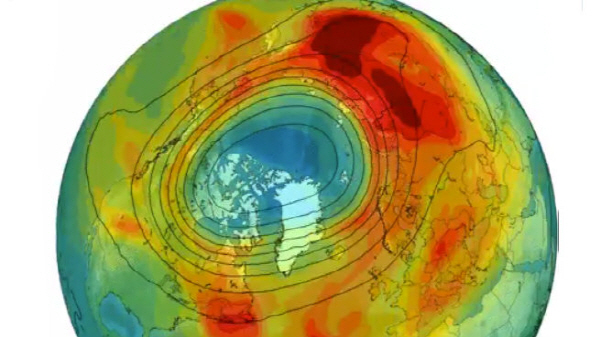
Scientists expressed concern that an unusual large-scale ozone hole occurred suddenly in the Arctic in March. However, the European Mid-term Forecast Center announced that the ozone hole had suddenly disappeared as it happened on April 23rd.
Earth’s atmosphere has an ozone layer with a high ozone concentration, absorbing ultraviolet rays from the sun. However, from March, an unusual situation has been reported in which the ozone concentration in the upper pole is very low and ozone holes occur. According to the European Space Agency, large ozone holes occur every fall in Antarctica, but it does not normally occur in the Arctic.
However, the arctic ozone hole ends abruptly like an outbreak. From mid-April, the ozone layer rapidly changes shape. Although significant improvements in air pollution have been reported due to the corona 19 epidemic, the researchers denied the link between ozone changes and the epidemic.
The European Mid-term Forecast Center says that there is no relationship with Corona 19, and ozone holes are usually caused by strong whirlwinds that continue for a long period of time and have no relationship with air quality. Also, according to NASA, the Arctic ozone concentration fell to a record last March. Similar declines in ozone concentration in the Arctic were observed only in 1997 and 2011.
Over the past century, a chemical called chlorofluorocarbon has destroyed the ozone layer, and the Antarctic ozone hole was identified in the 1980s. On the other hand, it generally rises in March to April. The decline in the concentration of ozone in the Arctic was a concern among scientists, saying it was an event in 100 years.
In early April, the European Space Agency announced that the range of ozone holes over the Arctic would be three times that of Greenland. At the same time, it was predicted that the ozone hole would disappear due to the rise in temperature, destroying the arctic air current, and mixing an atmosphere rich in ozone and an atmosphere with low ozone concentration.
Under the 1987 Montreal Protocol, 197 countries agreed to phase out chemicals, including chlorofluorocarbons. Experts say the cause of the change in the ozone layer this year is unknown, but if the Montreal Protocol does not stop chlorofluorocarbon emissions, the Arctic ozone deterioration is likely to worsen. Related information can be found here .



















Add comment